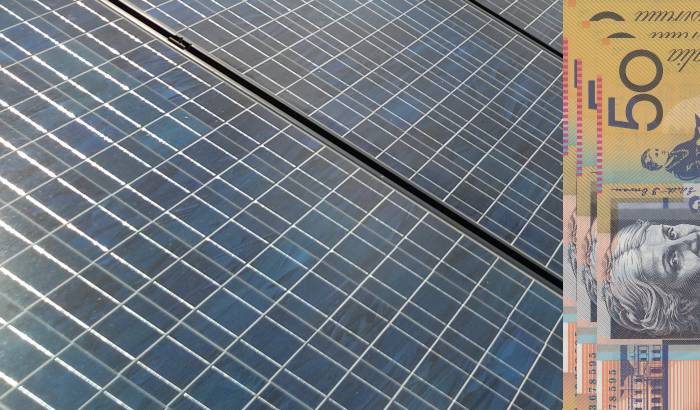
Solar panel image: B137, CC BY-SA 4.0
Thousands of regional Queensland households and businesses with large solar power systems installed will now be able to receive a solar feed in tariff (FiT).
Previously, there was 5kW size limit in place (inverter capacity) in order to be eligible for the feed in tariff (although there is potential to oversize systems to a degree).
On Friday, Queensland Treasurer and Acting Minster for Energy Curtis Pitt announced the limit had been increased to 30 kW of total rated inverter capacity.
“It’s great news for those 4000 solar customers not previously eligible for the FiT and great news for regional Queensland households and businesses considering solar,” said Mr. Pitt. “Many businesses who have been considering solar will now be able to take advantage of the regional FiT for excess power they export when their businesses are closed.”
The regional Queensland solar feed-in tariff rate is currently set at 10.102 cents, up from 7.448 cents per kilowatt hour during the 2016-17 year. Mr. Pitt said this is a cost-neutral rate based on market energy costs, therefore there is no additional expense to those who don’t have solar panels installed.
“Put simply – this initiative is a great outcome for customers and for the renewable energy industry,” Mr. Pitt stated.
Solar Citizens welcomed the announcement, stating it wouldn’t just help more regional Queensland households and businesses address rising power costs, but also put downward pressure on electricity prices due to solar’s contribution to the grid during peak times.
“This is exactly the sort of policy that’s needed to increase the uptake of rooftop solar and meet the Government’s commitment of 1 million solar roofs (3 gigawatts) by 2020,” said Solar Citizen’s Shani Tager.
According to the latest data available from Australia’s Clean Energy Regulator, there were 521, 520 small-scale solar power systems (< 100kW) installed in Queensland as at August 1. The state continues to lead the nation in terms of numbers of systems installed – and by a wide margin. Next on the leaderboard is New South Wales with 374, 864 small systems in place, followed by Western Australia with 318, 713.
Installing solar across Queensland (and much of Australia) became even more attractive in July this year when retailers increased feed-in tariff rates by up to 83%.
While STC values, upon which Australia’s solar subsidy is based, have decreased since early this year, boosted feed-in tariff rates combined with recent electricity price increases have resulted in an improvement in the economics of rooftop solar that outweighs the disadvantage.

 RSS - Posts
RSS - Posts



If only WA would progress into the twentieth century.
I have an email from the controller of authorisations of domestic rooftop photovoltaic systems, that states that a household with systems with a maximum total potential capacity of more than 5kW, will cause damage to the (already unstable and unsafe) WA electricity grid.
Hi,
Just wanting to know the limit in QLD to sell back to the grid and is it daily?
A
Annette – to ask that question you must be confusing power (kW) with energy (kWh).
Export limits are defined by instantaneous power output. I explain what this means here:
http://www.solarquotes.com.au/blog/kw-and-kwh-what-is-the-difference/